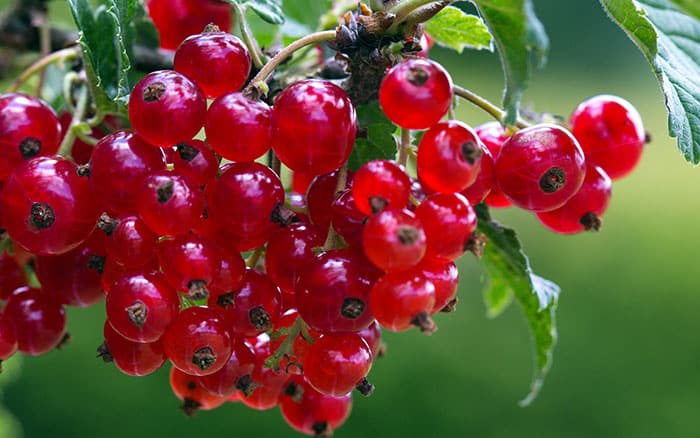As we take a step into autumn, our gardening may begin to slow. Although, there is no need for it to come to a stop because there are plenty of crops to sow, grow and harvest in October.
Crops for October…
Redcurrants
Firstly, these currants prefer a moist and well-drained soil in a sunny or partially shaded spot. Due to the dormant period in the chillier months, bare-root plants can be planted between October and March.
On the other hand, pot-grown plants can be planted any time. With that in mind, prepare the soil with plenty of organic matter and all-purpose fertiliser to give the crops a good start.

In spring, give the plants a feed with chicken manure, before mulching well which will help to retain moisture and keep weeds at bay. When newly planted, water in dry weather, but once they are fruiting and ripening hold off on watering because this can cause the fruit to split.
Finally, when they are shiny and firm, they can be harvested. Usually this is between June and September. In addition, be sure to harvest them as whole trusses rather than picking individual berries on a dry day.
Peas

If you sowed maincrop cultivars in March or June, chances are you’re getting the final harvests this month, so get prepared for an early crop of peas next year that will be ready for harvesting from May.
For this, peas can be sown in autumn indoors about 3cm in a length of guttering which will ensure a straight row and also protect them from being eaten by mice.
When it comes to planting out, peas will need to be planted 5cm with support. This is because they are climbing plants that use their tendrils to wrap themselves around almost anything.
The peas are ready for harvesting when the pods are swollen with peas. The peas that are lowest on the plants are the most mature, so should be picked first.
Eating peas will be sure to deliver plenty of nutrients to your body as they are high in fibre and protein to keep your body growing and repairing and your digestive system healthy.
Mint
Young plants or root cuttings of mint can be planted in autumn. It’s ideal to grow mint in a pot because it grows so easily that it may spread vigorously. Also, it will help to keep the plant compact with an abundance of leaves to harvest.
Regularly cutting the mint will help to encourage new leafy growth and once flowering is done in late summer the plants can be cut back and fed with a fertiliser that’s high in nitrogen.

To harvest, simply snip off the greenery from any time it appears in spring all the way through the year. A handy way to store it is to wash the leaves and chop them up, add them to an ice-cube tray until they freeze, then add them to a freezer bag.
Apples

Planting bare-rooted apple trees is best done from October to March. Not only are they usually cheaper than potted trees, but they also available in a wider range of varieties.
When planting, pick a sunny spot with plenty of room to grow and spread. Once the soil is prepped with organic matter and a hole has been dug, the tree can be planted with a stake in place for support.
In winter, chicken manure applied to the base of the tree will be ideal. In addition, a sulphate of potash fertiliser will help to boost flowers and fruit.
July to November are the main months of apple harvests, and they can be picked as they ripen to avoid them falling. A very popular fruit, they are a good source of vitamin C and potassium which can benefit heart health.
If you’ve got a glut of apples, here are some ideas of what to do with your harvest.
Cauliflower
Growing your own cauliflower can give you harvests pretty much all year. Although the main sowing period is between March and May, seeds can be sown in October in a greenhouse or cold-frame for a head start on next year’s crops.
Preferring fertile soil, they should be watered well in dry weather to keep the root zone moist.

This veg is high in fibre and vitamin C which acts as an antioxidant, which are helpful in protecting against a number of chronic diseases. They will be ready for harvesting when the heads are firm before the florets start to separate.
Garlic

Garlic doesn’t take much space to grow and it doesn’t demand much either. Planting garlic in autumn is ideal because the cloves use the cold weather to develop into bulbs. To plant, split a bulb into individual cloves and plant 5cm deep, 20cm apart in well-drained soil with the point end facing upwards.
If your soil is heavy or clay soil, you can plant the cloves in a modular tray which can then be planted out in spring.
Once planted, garlic needs regular watering and weeding between the plants and removal of flowers that they produce. Then, when the leaves turn yellow, the garlic can be harvested using a trowel to gently lift them out.
Adding garlic to your meals will add plenty of flavour, and eating it aids the circulatory system and supports immune function.

Leave A Comment